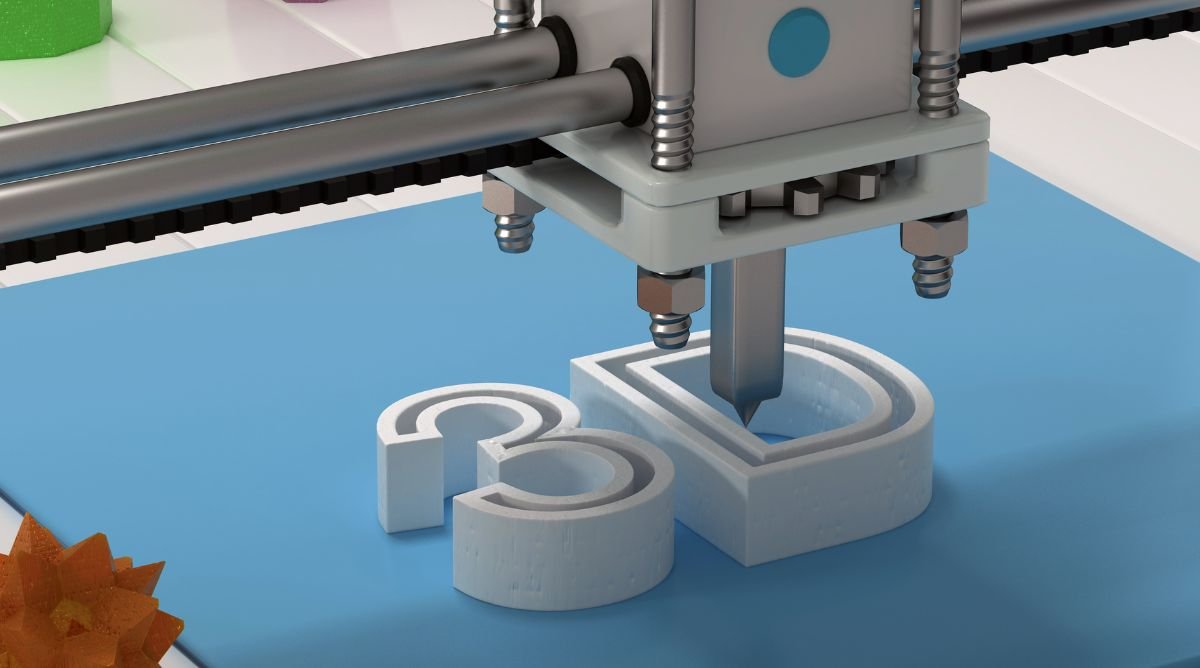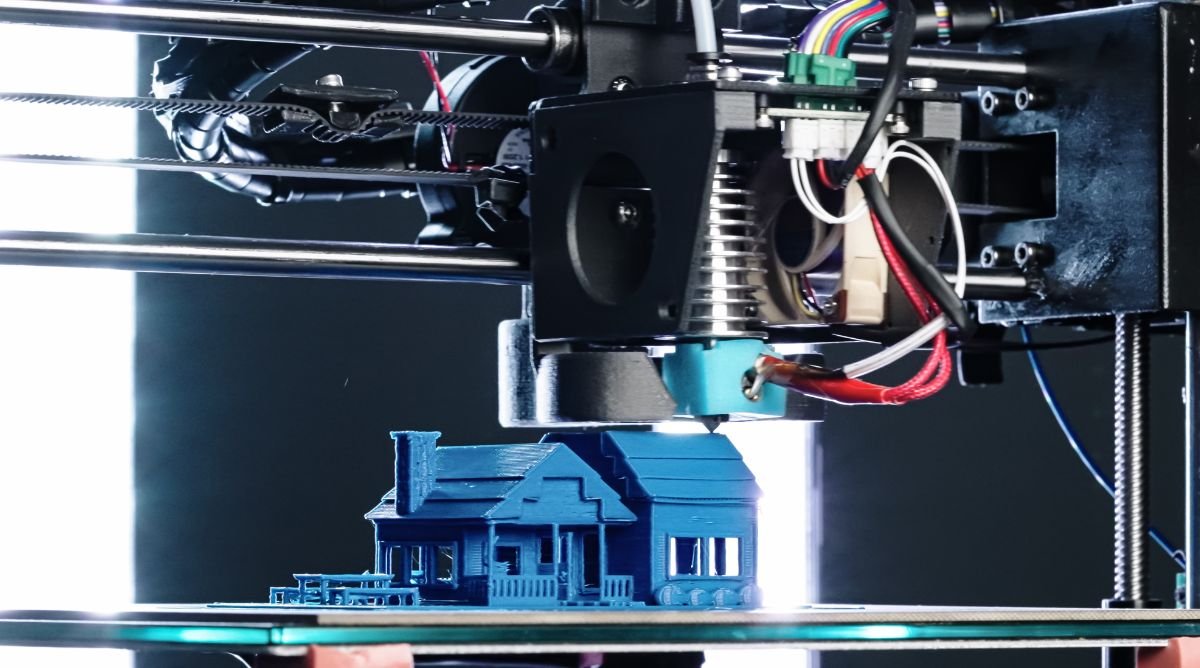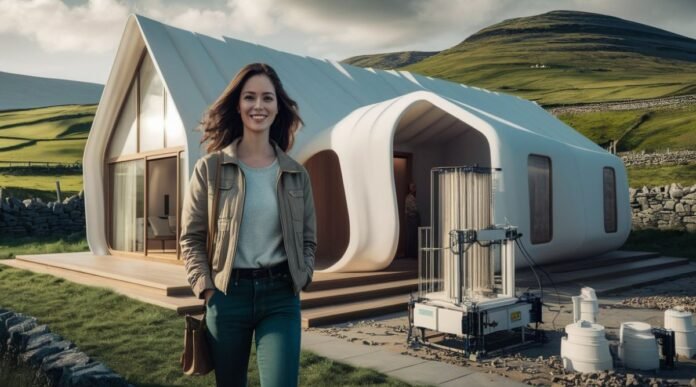What if homes could be built as easily as printing a shopping list? It sounds futuristic, almost too good to be true. But in Dundalk, Ireland, this vision has already leapt off the blueprint and into reality.
In just 12 days—less than two weeks—a fully functional, three-bedroom house took shape. Not with bricks or mortar, but with a 3D printer.
To put that into perspective, traditional houses in Ireland take over six months to build. Yet this project, Ireland’s first 3D-printed social house, shattered expectations.
It’s a paradigm shift, one that raises big questions: Can 3D printing solve Ireland’s housing crisis? Could it revolutionize how we think about construction altogether?
More and more, it seems like cheap housing is getting farther away. The answers to these questions could determine how and where we live in the future.

A Crisis That Calls For New Ideas:
Ireland’s housing crisis is more than a headline. For thousands of families, it’s a fact of life. A growing population, rising home prices, and a lack of houses have all come together to make a perfect storm. What’s the outcome? It’s getting harder and harder to find affordable homes.
What about this? The average price of a house in Ireland went up by over 6% in 2023. Many people no longer see having a home as a big deal; they see it as a dream. And government housing, which is often the last option for families who are having a hard time, has not been up to par. Every day, wait lists get longer.
So, how do you fix a problem this big? How do you build homes that are not just faster to construct, but also cheaper and smarter?
This is where the Grange Close project in Dundalk comes in. This house is a proof of concept, designed with groundbreaking 3D printing technology to demonstrate a new approach to social housing. A better way.
And it’s not only about speed; although it is a major factor in attraction. It is about confronting the outdated structures that have governed Ireland’s building sector for decades. It’s about developing ideas that surpass the demand rather than merely fulfill it.
The Technology:
The COBOD BOD2 3D building printer is at the heart of this unique project. It looks and feels like something from the future. This printer does things very differently from the old, complicated, and time-consuming ways of building things. It doesn’t put bricks in order or pour concrete; instead, it follows a digital plan and “prints” walls, one layer at a time.
The procedure seems to be straightforward. The printer precisely and quickly builds the walls using a specifically created concrete mix. There are not countless days of chopping and crushing. Simply a neat, methodical procedure changing our perspective on building.
What Sets the COBOD BOD2 Apart?
- Precision: This printer doesn’t make mistakes. Its millimeter-level accuracy ensures that every wall is perfectly aligned, every time.
- Speed: In just 12 days, the walls for the entire house were completed—what would normally take months was done in less than two weeks.
- Efficiency: By minimizing material waste and optimizing resources, the process is both environmentally friendly and cost-effective.
And it goes beyond the machine as well. Its choice of locally obtained, durable concrete mix is quite important. Designed to satisfy Eurocode 6 masonry requirements, this combination guarantees that the construction is exactly as strong, if not more strong than traditionally built houses.
View this post on Instagram
12 Days, 12 Walls:
Building a house has always been a slow, grueling process. Months of planning. Endless delays. Coordination between teams. Yet in Dundalk, all of this was rewritten. A fully functional, three-bedroom home rose from the ground in just 12 days.
How? With the accuracy and speed of 3D printing.
Breaking Down the Process
- Days 1 and 2: The first step was to prepare the spot. The groundwork was done. It was normal, strong, and ready to support the new work that was to come.
- From days 3 to 14, magic happened. The COBOD BOD2 printer took over and printed walls carefully, one layer at a time. By the 14th day, the house’s frame was completely built.
- From day 15 on, other teams came in to finish the job. They put on the roof, the plumbing, the electricity, and the internal fixtures, turning the printed shell into a house that could be lived in.
The star of the show was the 12-day wall printing phase. Quick, precise, and seamless. No scaffolding. No wasted materials. Just a methodical process that defied the norms of construction.
How Does This Compare?
For background, building a house in Ireland with traditional techniques takes six to nine months. This project cut that schedule by an amazing degree. Although roofing and wiring still required time, overall the procedure was shockingly faster than usual.
Design Meets Functionality:
No, this wasn’t some flashy technological test. It’s a real house made for real people. The technology behind it may seem like something from the future, but the design is real and made to meet everyday needs.
What’s Inside?
- Three-bedroom units: Spacious and functional, each unit can comfortably house a family.
- Energy-efficient design: Built with sustainable materials and thoughtful layouts, the home minimizes energy use, keeping utility costs low.
- Built to last: The structure meets Eurocode 6 masonry standards, ensuring strength and durability comparable to traditionally built houses.
Minimalism That Makes Sense:
The style serves a function; it is not flashy or overblown. Every part serves a purpose, much as the 3D printing process itself does. Nothing is wasted. Not unnecessary fancy language here. Just a basic, neat design emphasizing functionality.
It shows a bigger trend in modern architecture: design that is meant to be there. They are easier to use, made to meet the needs of the people who live there, and not just to make a statement.
Technology Serving Humanity:
Though the walls were printed by a machine, the house is undeniably human. It was built with families in mind, those in need of reasonably priced, useful accommodation. The design is intelligent. The materials are environmentally friendly. Comfort and usability took the front stage in every choice.
This is not about producing anything futuristic just for its novelty. It is about addressing actual issues. It’s about creating significant homes by combining creativity with humanity.

Impact on Society and Housing Policy:
The 3D-printed house in Dundalk is a wake-up call rather than only a technical marvel. This project provides a window into what might be possible if we dare to rethink how we build homes when Ireland’s housing crisis is nearing a breaking point.
Addressing the Housing Shortage:
Ireland is facing a severe shortage of homes. Homes are selling for a lot of money. There is no clear end in sight for the thousands of people who are waiting on lists for public homes.
Traditional building methods can’t keep up with demand because they take too long and cost too much.
But this house that was 3D printed? It makes the equation different:
- Faster builds: Things that used to take months can now be done in a lot less time.
- Lower costs: Work and Waste can be cut down to make homes cheaper.
- Scalability: This plan has a huge chance of being used in other neighborhoods, cities, or even countries.
Criticism and Concerns:
Of course, some people don’t like every new idea. Some people say that 3D printing could put people out of work, while others wonder if these homes will last.
People are worried about how well it will work in bigger towns. Can 3D-printed homes meet the wants of people who live in cities?
This project doesn’t say it has all the answers, though. It’s a step forward and opens the door to what’s possible. It lets us have more conversations, try new things, and find more answers.
Challenges and Lessons Learned:
No groundbreaking project is without its struggles—and the Dundalk 3D-printed house was no exception. It was an important step toward something bigger because every challenge taught us something useful.
Technology Struggles:
Even though the COBOD BOD2 printer is great, it does have some problems. There were times when things didn’t work as planned, as with any new device. There were some technical problems, which is to be expected when you’re pushing the limits of what’s possible.
The weather was another thing. Because the printer has to work in calm conditions to be accurate, rain and wind made it impossible to print some days.
However, these problems were always seen as a way to learn. These problems will probably happen less often as technology gets better.
Materials and Scalability:
Ensuring the materials were up to scratch was another hurdle. The concrete mix had to meet Eurocode 6 masonry standards—a crucial step to guarantee the house’s durability and long-term stability.
But the real question is how to scale. Even though this project was small, it shows that bigger urban projects are still possible. Can 3D printing handle the needs of cities with lots of people? The team is ready to take on the task, but only time and more progress will tell.
The Human Element:
Although the printing process depended much on technology, human hands were still required to finish the task. Traditional building crews covered roofing, wiring, and plumbing as well as other areas.
This exposes a crucial reality: integration will define building rather than replacing humans with machines. Together, technology and competent labor will produce quicker, more effective outcomes.
Future of 3D Printing in Housing:
The Dundalk project is just the start. It shows how 3D printing could change the housing industry, not just one house. More quickly. Not as expensive. More long-term.
Scaling the Vision:
So, the big question remains: Can this be scaled? The Dundalk house was amazing, but what’s cool is when you apply it to bigger towns.
We are still seeing changes in technology. But it’s clear what could happen. As 3D printing gets better, the goal is for these houses to become more than just single-family homes and become whole neighborhoods. Imagine whole neighborhoods being built in a fraction of the time it would take to build them the old way.
Global Potential:
And this is not a solution exclusive to Ireland. Globally, the technology is quite promising. Nations experiencing extreme housing shortages or limited building resources would find much advantage.
Think of places in poor countries that don’t have many homes or places that have been hit by natural disasters and need to be rebuilt right away. 3D printing could be a faster and cheaper way to build protection in these places. Homes could be built in record time, and given to people who need them.
In A Nutshell:
The 3D-printed house in Dundalk offers a peek at the future, not only a neat tech showcase. Homes constructed faster, less expensive, and smarter in the future. Where we no longer have to decide between price and quality. The promise is obvious even if obstacles still lie ahead. This initiative shows that invention belongs in our communities rather than only in a lab.
Though it may be rocky, the route is one worth traveling. As 3D printing develops, it could completely change the way we construct homes—and who gets to buy one. The Dundalk house is not only a representation of construction going forward. It is the template for a fresh phase in housing. And this is the starting point.


